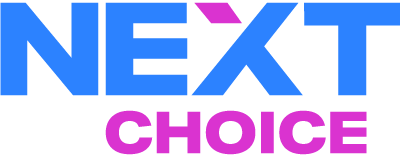Mastering Product Development: Tips for a Competitive Edge
In today's fast-paced market, mastering product development is essential for companies looking to maintain a competitive edge. Whether you're a startup aiming to make a mark or an established business seeking innovation, understanding the ins and outs of product development can differentiate you from the competition. In this blog, we'll explore practical tips that simplify the process and enhance your product's success.
Understanding the Product Development Lifecycle
Before diving into tips, it's crucial to understand the stages of product development—from ideation to launch. Familiarizing yourself with this lifecycle helps in planning your approach effectively.
The first step, ideation, is where creativity flows! It's critical to brainstorm various ideas and generate innovative concepts. This initial phase sets the tone for the entire process. During ideation, don't shy away from thinking outside the box; some of the best products were born from unconventional ideas.
Next comes the design and development phase, where you start molding your best concepts into tangible products. Here, visual and functional aspects come together, creating an early representation of your idea. Create mock-ups, gather feedback, and iterate until you develop a robust prototype that's ready for user testing.
Finally, the launch is your moment to shine! This stage should focus on executing a strategy that includes marketing and distribution. Remember, a smooth launch is not just about the product; it's about creating excitement and anticipation within your target audience.
Identifying Market Needs
Successful products stem from a clear understanding of customer needs. Engaging with your target audience through surveys and interviews can unveil insights that shape your product effectively.
But how do you tap into those insights? Start by dedicating time to market research. Research is not just a checkbox; it's an essential part of defining your product's value. Investigate competitors, analyze market gaps, and understand trends. This knowledge lays the groundwork for creating something that truly resonates with consumers.
Customer personas can also be a game changer. By creating detailed profiles of your ideal customers—including their preferences, frustrations, and goals—you get a clearer picture of what to deliver. Look beyond demographics; insights into behaviors and lifestyle choices are pivotal.
Ultimately, the goal is to ensure your product is not just another offering but a solution that fulfills an essential customer need. This alignment with market demand is your ticket to standing apart in a competitive landscape.
Building a Prototype
Creating a prototype allows you to visualize your concept and test its functionality. This step is vital in gathering user feedback before finalizing your product.
Think of your prototype as the bridge between ideas and reality. It’s the tangible representation of your vision, and it opens the door to invaluable testing. Whether it's a simple sketch, a digital model, or a fully functioning version, your prototype should reflect your product's core attributes.
In the prototyping phase, embrace both creativity and flexibility. Be open to making adjustments based on the feedback you receive. These iterations are not just about enhancing functionality; they can also uncover new features that enhance user experience. In fact, many successful products evolved significantly through user feedback during this stage!
Iterative Testing and Feedback
Emphasizing iteration based on user feedback helps refine your product. Regular testing not only enhances quality but also fosters a sense of community among early adopters.
Consider implementing a beta testing phase. This allows a select group of users to engage with your product before the official launch. Their insights can reveal both the strength and weaknesses of your product, enabling you to make necessary adjustments. Additionally, this group can become your brand's advocates, spreading the word as they witness the evolution of your product firsthand.
Using tools like surveys and usability testing sessions can aid in gathering robust feedback. Every comment or suggestion is a treasure trove of information that contributes to creating an exceptional product. Use metrics to assess what works and what doesn’t, and always be prepared to pivot if necessary.
Collaboration Across Teams
Fostering collaboration between departments—such as design, marketing, and sales—can lead to a more cohesive product development process. Each team brings valuable insights that can enhance the final product.
Encourage an open dialogue between teams! Regular meetings and brainstorming sessions can ensure everyone is on the same page and allow for the exchange of ideas. This synergy not only aids in problem-solving but also cultivates a sense of ownership over the product. When every team feels involved, the result is a more well-rounded and effectively marketed product.
Utilizing collaborative tools and platforms can streamline communication further. From project management systems to shared documents, technology can facilitate better interactions and a more unified approach to product development.
Launching Your Product Successfully
A good launch strategy is essential for product visibility. Consider utilizing social media, online marketing, and community engagement to create buzz and drive initial sales.
The excitement during a launch can significantly influence early sales. Engage potential customers well ahead of your product's release through teasers, sneak peeks, and countdowns. Building anticipation is half the battle won!
Moreover, hosting a launch event, be it virtual or in-person, provides an opportunity to showcase your product and interact directly with potential users. This personal touch can leave a lasting impression, turning curious onlookers into lifelong customers.
Finally, don’t forget to analyze the success of your launch. Use metrics to evaluate customer responses and sales figures. This analysis can guide your next steps and improve future launches, making each subsequent experience even better.
Final Thoughts on Product Development Mastery
By implementing these tips and focusing on customer feedback, market trends, and effective collaboration, you can streamline your product development process and stand out in a crowded market. Remember, mastery doesn't come overnight; it requires patience, persistence, and a willingness to adapt. Embrace the journey, and you'll find that your products not only meet expectations but exceed them.

